
What Is Gay Role Models? A Comprehensive Exploration of LGBTQ+ Role Models in Society
1. Introduction – What Is Gay Role Models?
“What Is Gay Role Models?” might sound like a straightforward question, but it’s layered with cultural, social, and individual significance. Role models are people who influence others through their actions, achievements, or public profiles. In the LGBTQ+ community, these figures can have an even greater impact, as they often provide representation and hope for individuals who might feel marginalized or misunderstood by society at large.
This blog post offers an in-depth exploration of LGBTQ+ role models—including gay, lesbian, bisexual, and transgender figures—looking at how they shape identity, inspire activism, and change cultural perceptions. We’ll delve into the historical emergence of queer role models, the difference they make in youths’ lives, and how they function within the modern era of social media and global connectivity. We’ll also address important questions such as:
- Who are your openly gay role models & why?
- What is lesbian role models?
- What is transgender role models?
- What is bisexual role models?
- Why are LGBTQ+ role models critical to our community?
We’ll compare concepts like “role models,” “icons,” and “influencers,” analyzing how each label influences the way we perceive prominent figures. As we examine both the triumphs and challenges faced by out-and-proud personalities, we’ll also look at how intersectionality—spanning race, disability, class, and faith—complicates or enriches the idea of role modeling. Finally, we’ll reflect on how each of us can foster new role models, especially for younger generations craving mentorship and visible success stories.
Our aim is to create a comprehensive piece that addresses every dimension of “What Is Gay Role Models?” and underscores the vital importance these figures hold for the community at large. Throughout this blog, you’ll find real-life examples, historical context, best practices for mentorship, and contemplations on how to sustain ongoing progress. If you’ve ever looked up to someone who shared your sexual orientation or gender identity, you’ll resonate with many points here. If you’re new to the conversation, may this serve as a thorough introduction to one of the key components of LGBTQ+ empowerment and visibility.
Let’s begin.

2. Defining the Concept: What Are Gay Role Models?
Role models are those who exemplify values, behaviors, and accomplishments that others admire and wish to emulate. Gay role models specifically are individuals—usually men, but the term “gay” can be used more broadly—who identify openly as gay and demonstrate qualities that resonate with or inspire others within and outside the LGBTQ+ community. These role models could be activists, artists, athletes, politicians, celebrities, scientists, or everyday people whose life stories exhibit courage, resilience, compassion, or notable achievements.
2.1 Characteristics of Gay Role Models
- Visibility: They live openly, acknowledging their orientation publicly.
- Integrity: Their public persona often aligns with their personal values.
- Representation: They reflect aspects of the gay experience, offering a “mirror” for those who see themselves in that narrative.
- Inspiration: They inspire hope, encouraging others to accept themselves, strive for excellence, or stand up for their rights.
2.2 The Importance of Self-Identification
One crucial aspect of being a gay role model is self-identification. Historically, many public figures chose to remain closeted due to fear of discrimination. But open identification allows them to claim their LGBTQ+ identity as part of their public narrative. This fosters an environment where others can realize, “I’m not alone,” or “Someone like me can succeed.” In an era where representation is increasingly recognized as vital, self-identification stands at the core of role modeling.
2.3 The Expanding Umbrella: LGBTQ+ Role Models
While the term “gay role models” has often been used, the broader conversation encompasses lesbians, bisexuals, transgender individuals, non-binary folks, and other queer identities. That’s why many prefer to talk about LGBTQ+ or queer role models. However, each subset—such as lesbian role models, bisexual role models, or transgender role models—has its unique challenges and resonates differently with each community segment.
Regardless, the fundamental role of a queer role model is to demonstrate that LGBTQ+ individuals can—and do—live fulfilling lives, excel in their chosen fields, and navigate adversity with dignity. Their stories counter harmful stereotypes and create new possibilities for personal growth. By defining what are gay role models, we set the stage for deeper discussion about how these figures function, how they emerged historically, and the complexities they navigate in public life.
Advertisement · Scroll to continue
Recommended
3. Why LGBTQ+ Role Models Are Critical
“LGBTQ+ Role Models Are Critical” is a resounding statement you’ll often hear in conversations about youth empowerment, mental health, and social justice. But what exactly does that mean?
3.1 Impact on Personal Identity
For LGBTQ+ individuals—particularly teenagers—seeing someone who shares their identity and flourishes can be transformative. Many young people grapple with self-doubt, bullying, or internalized homophobia. A role model’s visibility says, “You can have a bright future.” This glimpse of possibility can significantly reduce feelings of isolation, foster better self-esteem, and encourage resilience.
3.2 Challenging Stereotypes
Role models who break stereotypes undermine societal prejudices. For instance, a gay athlete dominating a traditionally hyper-masculine sport challenges the notion that LGBTQ+ individuals can’t excel in that arena. A lesbian CEO running a major corporation erodes the belief that leadership is incompatible with being a queer woman. Each success story punctures a hole in overarching narratives that marginalize queer identities.
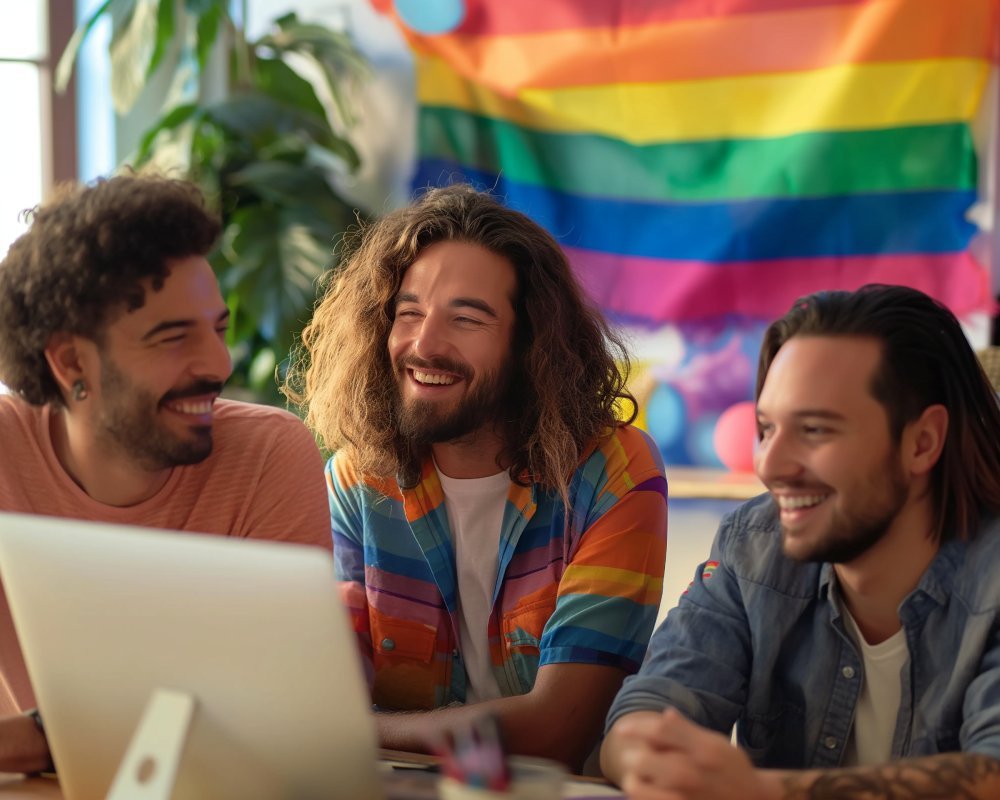
3.3 Catalyzing Social Change
High-profile LGBTQ+ figures often lend their voices to activism, using platforms to advocate for equality. When these figures speak out, they mobilize public opinion and influence policy debates. Think of openly gay politicians championing anti-discrimination laws, or trans celebrities educating millions about identity and healthcare needs. The ripple effects can range from policy reforms to broader cultural shifts in acceptance.
3.4 Mentoring and Community Building
Beyond broad social narratives, role models often engage in direct mentorship—whether through formal programs, public speaking, or grassroots community gatherings. Their presence can anchor local efforts: for example, a lesbian police officer might mentor LGBTQ+ youth in her hometown, or a trans activist might guide individuals in navigating medical transition. This community-building fosters solidarity, mutual respect, and generational continuity of knowledge.
3.5 Mental Health and Well-Being
Ample research shows that LGBTQ+ folks are at higher risk for mental health challenges due to social stigma, discrimination, and sometimes family rejection. Role models can serve as protective factors by offering hope and a sense of belonging. Knowing that someone like them not only survived but thrived can alleviate despair and inspire help-seeking behaviors.
In sum, LGBTQ+ role models contribute not just as shining individuals but as catalysts for personal and societal transformation. They illuminate pathways to success, deter negative stereotypes, and encourage deeper cultural acceptance. From the perspective of an at-risk LGBTQ+ youth or a questioning adult, these figures can mean the difference between feeling hopelessly alone and believing in a brighter future.
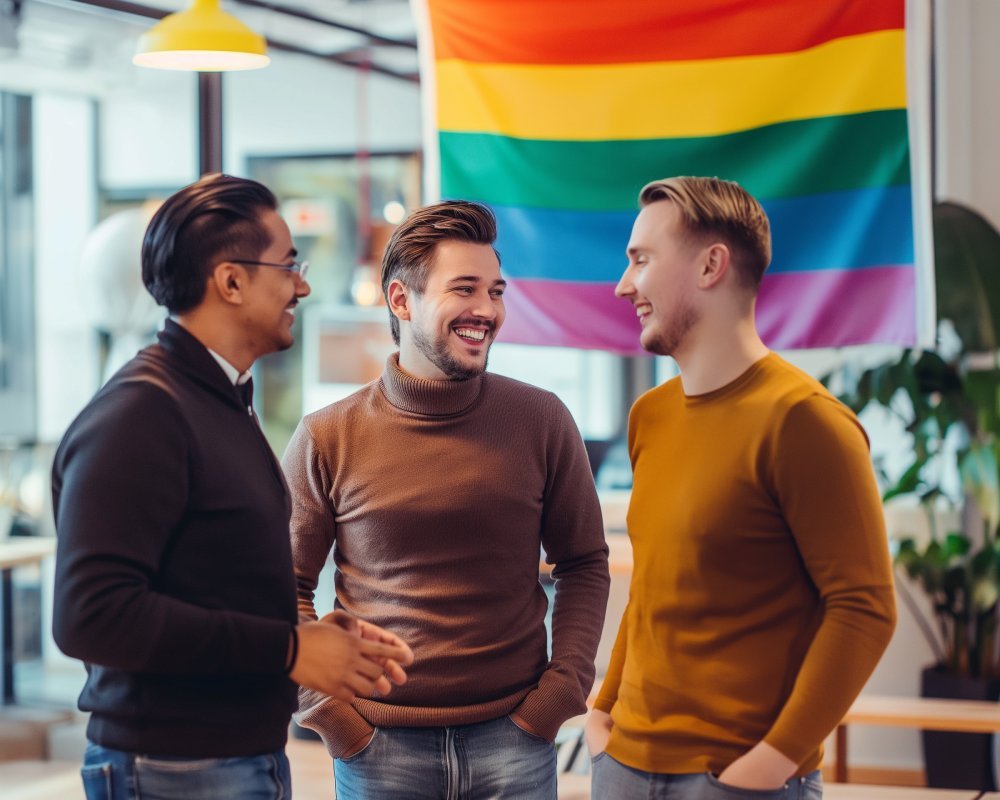
4. Historical Context: Queer Role Models Making History, Past and Present
When we talk about “Queer Role Models Making History: Past and Present,” we’re acknowledging the long arc of LGBTQ+ contributions that were often hidden or suppressed. Many historical figures accomplished remarkable feats, though their sexual orientation or gender identity remained largely private—or was posthumously revealed. Yet, even those who weren’t fully “out” by modern standards laid groundwork for the activism and visibility we see today.
4.1 Ancient Times and the Shadows of History
- Ancient Greece and Rome: While same-sex relationships, particularly between men, were sometimes accepted in certain contexts, direct parallels to modern “gay identity” are complicated by cultural norms. Philosophers like Plato wrote about male-male affection, but we lack records of them identifying as gay in a contemporary sense.
- Medieval and Renaissance Periods: During the Middle Ages and Renaissance, same-sex desire was harshly criminalized in much of Europe. Consequently, we see coded references in letters, poetry, or artwork. Some historians suspect that various artists, including figures like Michelangelo or Leonardo da Vinci, had complex relationships that may point to same-sex attraction.
4.2 The Early 20th Century: Rising Visibility and Taboos
- Literary Circles: Writers like Oscar Wilde (19th century, but bridging to the 20th) endured public trials for “gross indecency.” His wit, talent, and tragic personal story made him a posthumous gay icon, inspiring future generations to see artistry as a mode of coded expression.
- Harlem Renaissance: During the 1920s, the Harlem Renaissance in the U.S. provided a cultural awakening for Black creatives. Within those circles, figures like Langston Hughes existed, though discussion of their potential queerness often remained muted.
4.3 Post-World War II to Stonewall
- McCarthy Era and the Lavender Scare: LGBTQ+ federal employees in the U.S. were systematically purged. Notable intellectuals, artists, and future activists lived double lives.
- Early Activists: Organizations like the Mattachine Society (founded 1950) and the Daughters of Bilitis (founded 1955) represented the first waves of “homophile” movements, though membership was often secretive due to fear of harassment.

4.4 Stonewall and the Rise of Modern LGBTQ+ Activism
- Stonewall Riots (1969): This watershed moment catalyzed the Gay Liberation Front, ushering in a more public and confrontational brand of activism. Individuals like Marsha P. Johnson and Sylvia Rivera became revered as role models for trans and gender-nonconforming people, although mainstream recognition took decades.
- 1970s and Visibility: As gay liberation movements expanded, figures like Harvey Milk emerged—an openly gay man elected to public office in San Francisco. Milk’s advocacy and tragic assassination in 1978 made him a symbol of hope and martyrdom for LGBTQ+ rights.
4.5 The HIV/AIDS Crisis and 1980s–1990s
- A Community Under Siege: The AIDS epidemic decimated queer communities but also galvanized activism. Leaders like Larry Kramer co-founded ACT UP, demanding medical research and government action.
- Public Figures Coming Out: By the 1990s, more celebrities, politicians, and entertainers started to come out, though risks remained high.
4.6 21st Century: Greater Visibility and the Ongoing Fight
- Marriage Equality Campaigns: The legalization of same-sex marriage in various countries propelled LGBTQ+ individuals into the mainstream. Figures like Ellen DeGeneres, Laverne Cox, and Pete Buttigieg became globally recognized names.
- Intersectional Role Models: Modern icons now often emphasize intersectionality—like Black, disabled, or immigrant queer figures who articulate how layered identities intersect with their queerness.
Throughout the centuries, many LGBTQ+ individuals have been forced to adopt secrecy or coded language, leaving us with incomplete or contested historical narratives. Despite these obstacles, the presence of queer role models in every era—whether recognized at the time or uncovered retrospectively—cements that LGBTQ+ people have always contributed significantly to culture, politics, science, and the arts. Understanding this lineage enriches our current appreciation for role models, reminding us that today’s icons stand on the shoulders of giants.
5. What Is Lesbian Role Models? Unpacking Female Queer Representation
While the term “gay” might be used colloquially for both men and women, “What Is Lesbian Role Models?” is a question of its own because the experiences of queer women can differ from that of gay men. Lesbian role models center women’s unique struggles and triumphs, reflecting both sexism and homophobia in their journeys.
5.1 Historical Erasure and the Female Experience
Lesbians historically faced distinct marginalization compared to gay men. Patriarchal societies often policed women’s sexuality more rigidly—or dismissed it entirely as non-threatening to male dominance. This led to less documentation of famous lesbian relationships in the historical record. Nonetheless, we have glimpses of influential lesbian or bisexual women: from the romantic friendships in 18th–19th-century Europe to 20th-century literary figures like Gertrude Stein and Alice B. Toklas, who formed circles that shaped modernist thought.
5.2 Contemporary Lesbian Icons
- Billie Jean King: A tennis legend who broke barriers in women’s sports and eventually came out. Her activism for equal pay and LGBTQ+ rights epitomizes how personal courage can intersect with broader social impact.
- Ellen DeGeneres: Perhaps one of the most mainstream-known lesbians globally. Her sitcom’s historic “coming out” episode in 1997 was a turning point in media representation, though it also resulted in professional backlash at the time.
- Audre Lorde: A Black lesbian poet and feminist writer whose work integrated race, gender, sexuality, and class. She exemplifies how role models often challenge multiple systems of oppression simultaneously.
5.3 Significance of Lesbian Role Models
- Affirming Women’s Autonomy: Lesbian role models visibly challenge normative expectations around heterosexual marriage and female subservience.
- Encouraging Inclusivity Within Feminism: They remind mainstream feminist movements to incorporate queer perspectives, highlighting that feminism’s fight for equality must span sexual orientation, gender identity, and race.
- Inspiring Younger Generations: Lesbian teens see that living openly isn’t just possible—it can lead to fulfilling relationships, families, and successful careers.

5.4 Varied Identities Under the “Lesbian” Label
While “lesbian” is often used, many queer women prefer different identifications, such as “gay woman,” “queer,” or “Sapphic,” reflecting the diversity of experiences. Role models thus also vary in how they self-label, influencing how they connect with different community segments.
Ultimately, lesbian role models are paramount to illustrating that there’s no single way to be a queer woman. Whether leading national organizations, winning Olympic medals, writing best-selling novels, or living more quietly but authentically in their communities, their visibility breaks down stereotypes and fosters a richer tapestry of representation.

Advertisement · Scroll to continue
Recommended
6. What Is Bisexual Role Models? Understanding Fluid Attractions and Visibility
“What Is Bisexual Role Models?” is a crucial query because bisexual individuals often encounter erasure in both straight and gay/lesbian spaces. Bisexuality, characterized by attraction to more than one gender (though definitions vary), can be misunderstood or dismissed by those who view sexual orientation as strictly binary. Hence, bisexual role models play a vital role in validating a fluid spectrum of attraction.
6.1 Unique Challenges of Bisexual Visibility
Bisexual individuals frequently confront:
- Biphobia: Negative stereotypes about being “confused,” “promiscuous,” or “only half-committed to the queer community.”
- Invisibility: They may “pass” as heterosexual or gay/lesbian depending on their partner’s gender, obscuring their bi identity.
- Suspicion from Both Sides: Some gay or lesbian circles question their commitment, while heterosexual communities might trivialize or fetishize them.
6.2 Prominent Bisexual Figures
- Freddie Mercury: The legendary Queen frontman had relationships with both men and women, though public discourse often labels him simply as “gay.” Acknowledging his bisexuality can help fans appreciate a fuller picture of his identity.
- Lady Gaga: A superstar who has openly discussed her bisexuality, often weaving LGBTQ+ advocacy into her music and philanthropic endeavors. She has served as a beacon for fans exploring fluid attraction.
- Aubrey Plaza: The actress has publicly identified as bisexual, bringing comedic flair to roles while normalizing fluid sexuality in mainstream media.
6.3 Why Bisexual Role Models Are Essential
- Affirming Fluid Attraction: Hearing someone say, “I’m bi” and seeing them thrive can help reduce internalized stigma.
- Educating the Public: Bisexual public figures can address misconceptions, reminding audiences that bisexuality is not a “phase” or a halfway step to being gay.
- Strengthening the Larger LGBTQ+ Movement: Bi folks often build bridges between heterosexual-leaning contexts and queer communities, fostering broader understanding of the spectrum of sexuality.
6.4 Visibility in Media and Culture
Though representation is improving, many bisexual celebrities or characters are still underrepresented or misrepresented. That’s why self-identifying bi role models are so important: they dispel myths and validate that attraction to more than one gender is neither shameful nor abnormal. By sharing their stories, they reduce the isolation some bi individuals feel—especially if they perceive the gay and lesbian communities as more visible or more “valid” in mainstream narratives.
In essence, bisexual role models bolster a diverse and inclusive understanding of sexuality. They remind us that human attraction isn’t always a neat, binary package. By stepping forward, they champion the idea that all forms of love and attraction deserve acknowledgment and respect.
7. What Is Transgender Role Models? The Power of Gender Identity Affirmation
Another vital part of the puzzle is “What Is Transgender Role Models?”. Trans individuals face not only homophobia but also transphobia—a prejudice specifically targeting those whose gender identity doesn’t align with the sex assigned at birth. This community has historically faced high levels of violence, unemployment, and mental health challenges. Thus, transgender role models are profoundly needed to blaze trails and demonstrate that thriving is possible despite systemic barriers.
7.1 Barriers to Trans Visibility
- Stigma and Misunderstanding: Many people harbor misconceptions about gender identity, leading to a lack of empathy or acceptance.
- Legal Hurdles: In some places, changing legal documents to reflect one’s correct gender is a cumbersome or even impossible process. This complicates everything from employment to travel.
- Violence: Trans individuals, especially trans women of color, experience disproportionately high rates of harassment, assault, and murder.
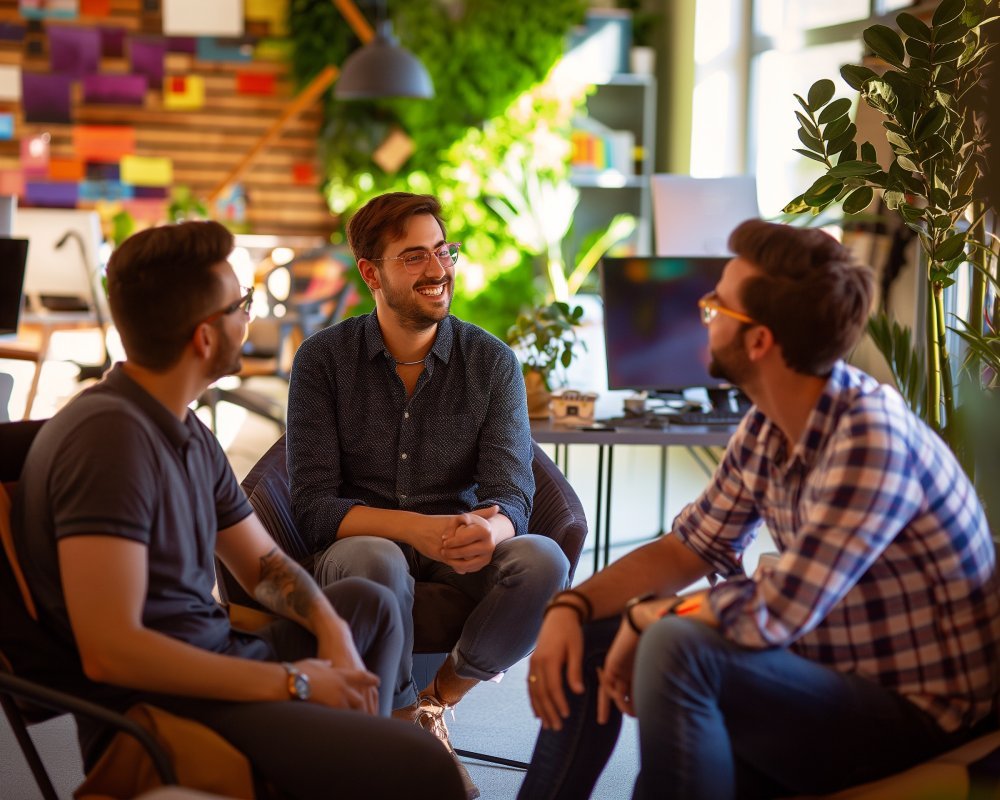
7.2 Influential Trans Role Models
- Marsha P. Johnson and Sylvia Rivera: Key figures in the Stonewall Riots and subsequent activism, particularly around trans issues. Their legacy underscores the longstanding role of trans people in LGBTQ+ liberation.
- Laverne Cox: An actress and advocate who gained mainstream fame through “Orange Is the New Black,” using her platform to discuss transgender health care, legal equality, and intersectionality.
- Janet Mock: A writer, journalist, and director, Mock is known for her memoirs detailing her experiences as a trans woman of color. She’s also produced content that highlights trans narratives in entertainment.
7.3 The Power of Trans Role Models
- Affirming Gender Identity: For trans youth questioning their identity, seeing a prominent figure confidently living as themselves can be lifesaving.
- Shifting Cultural Conversations: Each trans celebrity, politician, or advocate who shares their story widens public understanding. They transform abstract concepts about gender identity into lived, relatable examples.
- Advocating for Structural Change: Role models often engage in policy or activism, addressing critical issues like bathroom access, trans-inclusive healthcare, or anti-discrimination statutes.
7.4 Intersectionality Within Trans Experiences
Many trans role models also highlight intersectional identities—Black, Indigenous, disabled, or immigrants, for instance—revealing how overlapping oppressions intensify challenges but also inspire multi-layered activism. By being candid about these intersections, trans role models foster empathy and galvanize a broader coalition of supporters.
In conclusion, transgender role models illustrate how identity authenticity can coexist with personal achievement, reshaping the public narrative around gender. They provide a roadmap for those navigating transition, challenge preconceived biases, and propel a broader recognition of trans rights as human rights.
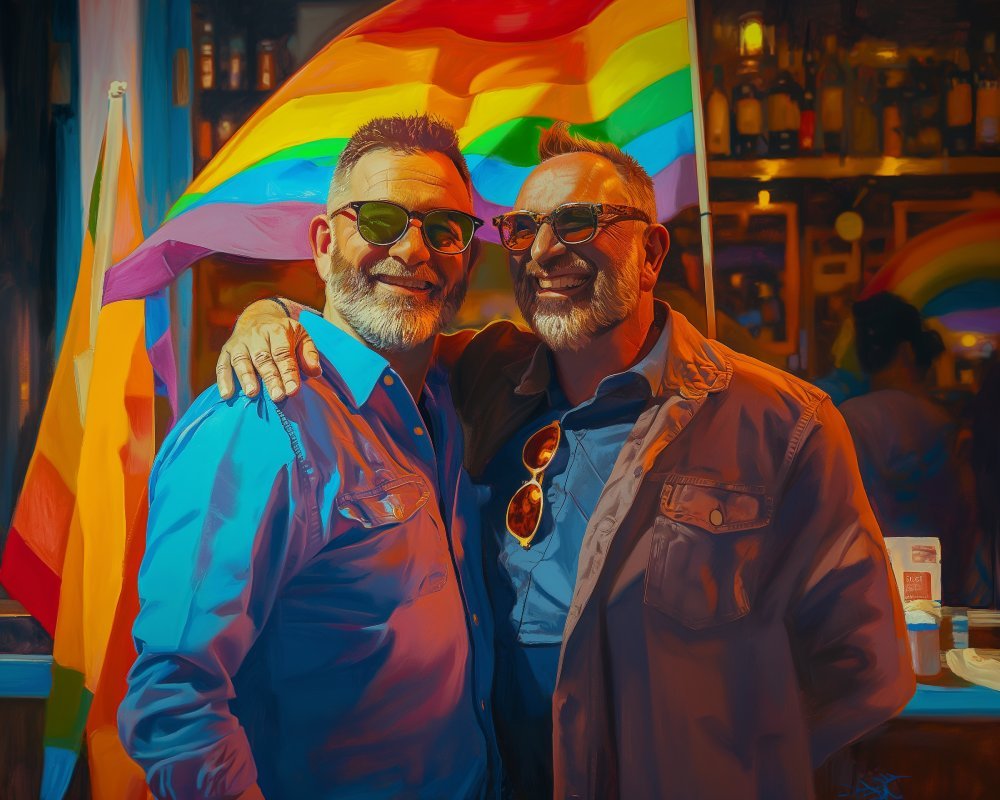
8. Our LGBTQ+ Role Models: Personal Stories and Community Impact
Up to this point, we’ve discussed categories of LGBTQ+ role models—gay, lesbian, bisexual, transgender. But how do these figures manifest in day-to-day life? Our LGBTQ+ role models often are not just celebrities; they can be teachers, family members, religious leaders, or community organizers who quietly but powerfully shape the lives of those around them.
8.1 Everyday Heroes
- Educators: An openly queer teacher who supports a GSA (Gender-Sexuality Alliance) at school can be a critical role model. Their visibility shows that LGBTQ+ individuals can thrive in professional settings and offer safe spaces for students.
- Healthcare Professionals: Out doctors and nurses provide culturally competent care, addressing disparities in LGBTQ+ health. They model how to combine professional expertise with empathetic understanding of queer-specific concerns.
- Neighborhood Leaders: A local organizer who brings the LGBTQ+ community together for mutual aid or social events can transform how neighbors see each other. By fostering inclusive neighborhoods, they become role models for grassroots activism.
8.2 Personal Anecdotes
Often, people cite a close friend or family member as their pivotal role model. For instance:
- A gay uncle who openly discusses his relationship with a partner, showing a young nephew that same-sex love is normal.
- A lesbian aunt who offers guidance to a questioning niece, modeling how to navigate the coming-out process and find joy in same-gender relationships.
- A bisexual cousin who openly dates partners of different genders, demystifying fluid attraction within the extended family.
- A trans sibling who transitions and stands firm in their identity, proving resilience in the face of adversity.
8.3 The Ripple Effect: Community and Beyond
When individuals witness such personal examples, they’re more likely to develop positive attitudes toward LGBTQ+ people. This leads to:
- Reduced Prejudice: Family, friends, or peers who see positive LGBTQ+ role models in real life are less likely to hold onto bigoted beliefs.
- Social Support Systems: Communities that rally around queer role models often become more robust, fostering shared resources, inclusive events, and local businesses catering to LGBTQ+ needs.
- Pathways to Broader Activism: Local role models sometimes step onto bigger stages, influencing municipal policies or connecting with state/national movements. Their journey from everyday hero to prominent activist can spark further transformation.
In other words, “Our LGBTQ+ role models” exist in all shapes and forms, from international superstars to a friendly face at the local coffee shop. Their impact resonates on personal and communal levels alike, forging an environment where authenticity isn’t just possible—it’s celebrated.
9. Who Are Your Openly Gay Role Models & Why?
This question—“Who are your openly gay role models & why?”—pushes us to examine what criteria we use in identifying these figures. It also reveals that role modeling is subjective, shaped by personal values, backgrounds, and aspirations.

9.1 Factors Influencing Choice of Role Models
- Shared Identity: People often gravitate toward figures who reflect their own demographics—be it race, religion, or career path. A black gay student might look up to media personality Karamo Brown (from “Queer Eye”), seeing parallels in cultural experiences.
- Professional Field: Aspiring athletes may idolize openly gay sports stars, while budding actors might name openly gay performers. This encourages them to believe, “I can succeed there too.”
- Activism and Advocacy: Some role models stand out for their political courage or philanthropic work, showing that success can be harnessed for community betterment.
- Personality and Character: Kindness, authenticity, perseverance, humility—these traits often draw admiration, regardless of the role model’s fame level.
9.2 Common Themes in Personal Stories
When people articulate why a particular openly gay person inspires them, you’ll hear phrases like:
- “They overcame adversity.”
- “They didn’t hide who they were, even when it was risky.”
- “They gave me hope that I could be myself.”
- “They supported causes I care about.”
These reflections emphasize that role models embody not just professional success but moral courage, empathy, and a readiness to uplift others.
9.3 Encouraging Dialogue
Asking “Who are your openly gay role models & why?” fosters community-building. Sharing answers in social groups, online forums, or educational settings prompts discussions about authenticity, shared challenges, and the broader significance of representation. We learn about new figures, discover inspiring life stories, and expand our sense of possibility.
So, as you ponder the question, consider how your role models align with your personal journey. Perhaps it’s an openly gay politician championing laws that safeguard LGBTQ+ families, or a musician whose lyrics helped you navigate coming out. By articulating the “why,” you clarify the values and aspirations that shape your own path—and might even become a role model for someone else in the process.

10. Contemporary Icons and Queer People on the LGBTQ Role Models in Their Lives
To dig deeper, let’s look at “Queer People On The LGBTQ Role Models In Their Lives,” focusing on contemporary icons as well as personal testimonies. Over the past few decades, multiple stars—musicians, actors, writers, athletes—have come out and garnered devoted followings among queer youth and allies. Simultaneously, everyday queer individuals frequently speak about the lesser-known role models who guided them.
10.1 Contemporary Icons in the Public Eye
- Lil Nas X: Bursting onto the scene with “Old Town Road,” Lil Nas X quickly established himself as a fearless, flamboyantly queer rapper breaking stereotypes in hip-hop. Younger LGBTQ+ fans praise him for blending humor, bold visuals, and unapologetic self-expression.
- Janelle Monáe: Identifying as pansexual and later as non-binary, Janelle Monáe’s music and style challenge binary norms. They use Afro-futuristic aesthetics to advance narratives about empowerment and the fluidity of both gender and sexuality.
- Elliot Page: A trans actor celebrated for roles in films like “Juno” and series like “The Umbrella Academy.” After coming out as transgender, Page used interviews to discuss mental health, identity, and trans rights, offering a high-profile example of trans joy.
10.2 Personal Testimonies: Everyday Stories
In interviews or online spaces (like forums, podcasts, or social media groups), everyday LGBTQ+ individuals highlight influences that shaped them:
- Sierra, a lesbian college student: “My older sister’s best friend was openly bisexual and had a rainbow flag on her backpack. Seeing that flag every day in high school, and how proud she was, gave me the courage to finally come out.”
- Marcel, a gay father: “We had a neighbor—a man married to another man—who was always so welcoming to me and my wife. When I realized I was bisexual, that neighbor was the first person I told. Watching him in a loving same-sex marriage made me see a new future for myself.”
- Anushka, a trans software engineer: “I got an internship at a startup led by a trans woman. She mentored me, taught me coding best practices, and also showed me how to be unapologetic about my identity in the workplace.”
10.3 The Role of Social Media and Online Platforms
Digital platforms allow marginalized individuals to connect with others worldwide, facilitating immediate exposure to role models. Queer youth in remote or conservative areas might not have local out role models but can follow LGBTQ+ influencers on YouTube, Instagram, or TikTok. While “influencer culture” can be fraught with superficiality, many LGBTQ+ creators use their channels to discuss mental health, coming out, or activism, thereby serving as accessible role models for an international audience.
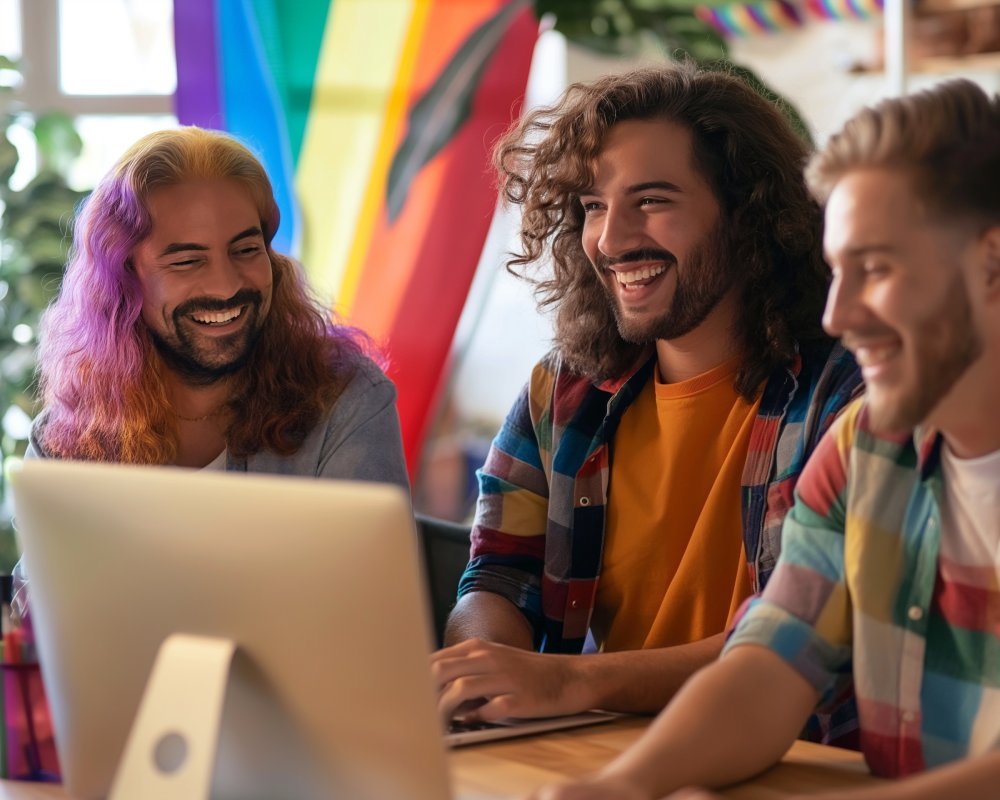
10.4 Maintaining Momentum
Hearing from “queer people on the LGBTQ role models in their lives” underscores how intangible influences—music, interviews, YouTube videos—can yield tangible results, like boosted self-esteem or impetus to come out. Each person’s story about their role model weaves a tapestry of interconnected empowerment. Recognizing these narratives is essential for ensuring that future generations can draw on an even broader network of supportive figures.
11. Role Models vs. Icons vs. Influencers: Key Comparators
When we discuss “Role Models,” we might also encounter overlapping terms like “icons” or “influencers.” While these labels sometimes converge, it’s helpful to parse the differences:
11.1 Role Models
- Definition: Individuals whose lives, values, or achievements inspire others to emulate them.
- Depth of Influence: Usually characterized by moral or aspirational quality; people look to them not just for entertainment but for personal growth or guidance.
- Examples: A gay politician who overcame adversity to champion LGBTQ+ rights, a trans activist who devotes their life to community empowerment.
11.2 Icons
- Definition: People who achieve legendary status within a particular culture or subculture. They might be revered for groundbreaking artistic achievements, charismatic leadership, or historical significance.
- Depth of Influence: Icons often symbolize entire movements or eras. They may or may not be moral paragons—some icons become revered for rebelliousness or flamboyance.
- Examples: Freddie Mercury is an icon, recognized for his unmatched vocal talent and stage presence, as well as his status as a queer trailblazer in rock music.
11.3 Influencers
- Definition: Individuals with the power to sway opinions, typically in the context of social media or online marketing. They build large followings on platforms like Instagram, TikTok, or YouTube.
- Depth of Influence: Often associated with consumer culture, brand endorsements, or comedic/entertainment content. That said, an influencer can be a role model if they approach their platform responsibly.
- Examples: A non-binary YouTuber with millions of subscribers discussing mental health, fashion, and activism can be both an influencer and a role model. However, some influencers might simply market products without deeper philanthropic or activist commitments.
11.4 Overlaps and Distinctions
Many “icons” and “influencers” can also be “role models,” but not necessarily. An icon might be revered mostly for artistic genius, while a role model is admired for ethical or life-affirming reasons. An influencer might have tremendous reach yet might lack the profound personal example that defines a role model. Conversely, some role models remain relatively unknown beyond their immediate community.
In the context of gay role models or LGBTQ+ role models, we should recognize that “icon” or “influencer” alone doesn’t guarantee constructive guidance—though it can. The ideal scenario is when an individual merges these capacities: they’re widely known (iconic or influential) and also dedicated to supporting queer communities and championing authenticity.

12. Intersectionality: Race, Disability, Class, and Faith in LGBTQ+ Role Modeling
Role models do not exist in a vacuum. They carry layered identities—race, disability, socioeconomic background, religious beliefs—that shape how they experience the world. Intersectionality acknowledges that each identity dimension interweaves, altering the challenges and triumphs a role model may encounter.
12.1 Race and Ethnicity
For queer people of color, finding role models who share both sexual/gender identity and racial background can be critical. Representation goes beyond being “out” to acknowledging shared cultural heritages. For instance:
- Black Lesbian Leaders: Figures like Angela Davis or Audre Lorde highlight Black feminist and queer struggles in tandem, reflecting the unique experiences of systemic racism and homophobia.
- Asian LGBTQ+ Celebrities: They might navigate family and community pressures differently, possibly dealing with cultural taboos around homosexuality. Their visibility challenges stereotypes about Asian conservatism.
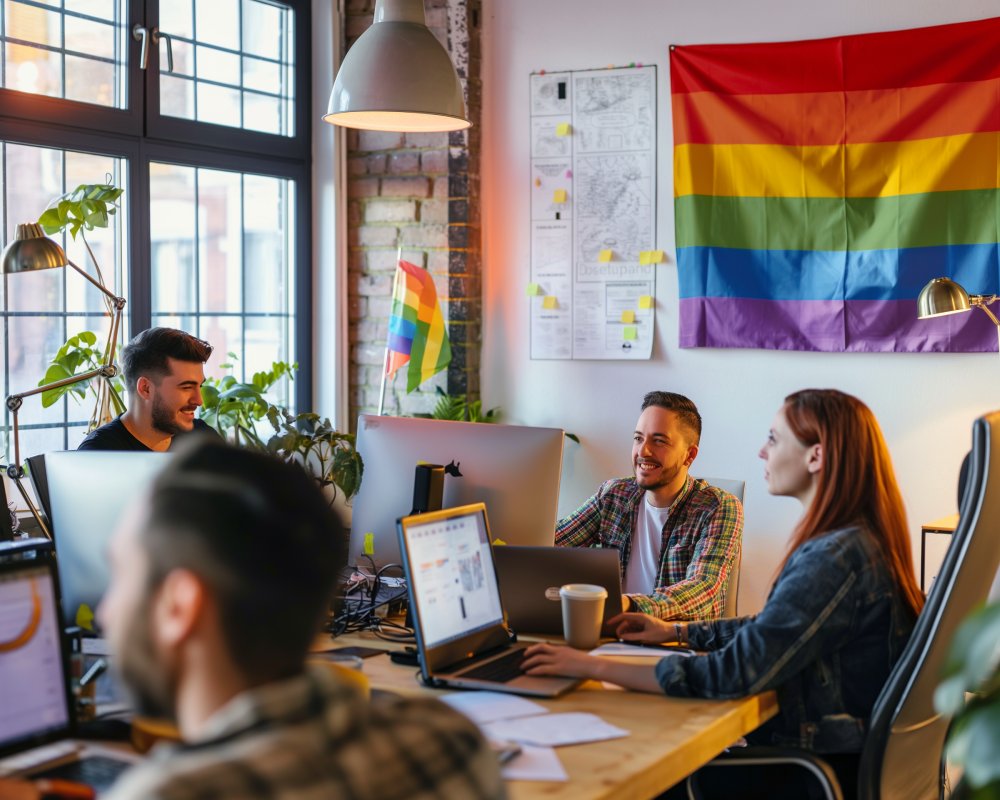
12.2 Disability
Being LGBTQ+ and disabled presents additional complexities: navigating ableism in the wider world and potential invisibility within queer spaces. Role models who openly discuss disability can break down misconceptions, showing that one’s sexuality or gender identity is not diminished by disability—and vice versa. Their advocacy can lead to more accessible Pride events, inclusive policy changes, and broader acceptance.
12.3 Class and Socioeconomic Factors
Wealth or lack thereof influences the resources an LGBTQ+ individual can access—such as education, healthcare, safe housing, or mental health services. A role model from a working-class background might resonate more with youths facing similar economic constraints, illustrating that success isn’t reserved solely for those with privileged upbringings.
12.4 Faith and Religion
Religious identity can be especially contentious for LGBTQ+ communities. Yet numerous queer people find ways to reconcile faith with sexuality, or they reinterpret religious teachings in a more inclusive manner. Role models who are openly LGBTQ+ and also devout—be they Christian, Muslim, Jewish, Hindu, or from another faith—demonstrate that spirituality and queer identity needn’t be at odds. This is transformative for those grappling with religious condemnation.
12.5 Why Intersectional Role Models Matter
Intersectional role models provide more nuanced portrayals of LGBTQ+ lives. Instead of a one-size-fits-all narrative, we see diverse trajectories:
- That a trans Latina might face different issues than a white gay male CEO.
- That a bisexual Deaf person might confront communication barriers in queer spaces.
- That a Black lesbian Muslim might navigate Islamophobia, racism, and homophobia concurrently.
By understanding these intersections, we expand empathy within the broader LGBTQ+ community and craft more targeted advocacy. Role models from these intersecting identities remind us that the fight for equality is multifaceted, requiring holistic support systems that honor every part of a person’s background.
13. Challenges Faced by LGBTQ+ Role Models in the Public Eye
While being an LGBTQ+ role model can be incredibly rewarding, these individuals often pay a steep price for their visibility. Societal attitudes, media scrutiny, and personal safety concerns pose real obstacles. Understanding these hurdles provides insight into the bravery required to stand out as a figure of hope.
13.1 Social and Media Pressures
- Tabloid Culture: Celebrities who come out might face invasive questions about their personal lives, overshadowing their professional achievements.
- Stereotyping: The media can pigeonhole them into token “gay best friend” narratives or constantly ask them to speak for the entire community, fueling burnout.
- Online Harassment: Social media trolls can bombard them with hate speech, doxxing attempts, or orchestrated smear campaigns.
13.2 Professional Risks
- Employment Discrimination: Despite progress, job discrimination persists in some regions. Even well-known figures might lose endorsements or roles for being openly LGBTQ+.
- Typecasting: In fields like entertainment, openly gay or trans actors might find themselves considered “unsuitable” for certain roles, limiting career growth.
- Corporate Politics: For CEOs or professionals, existing in a conservative corporate environment can lead to subtle marginalization or stunted promotions.
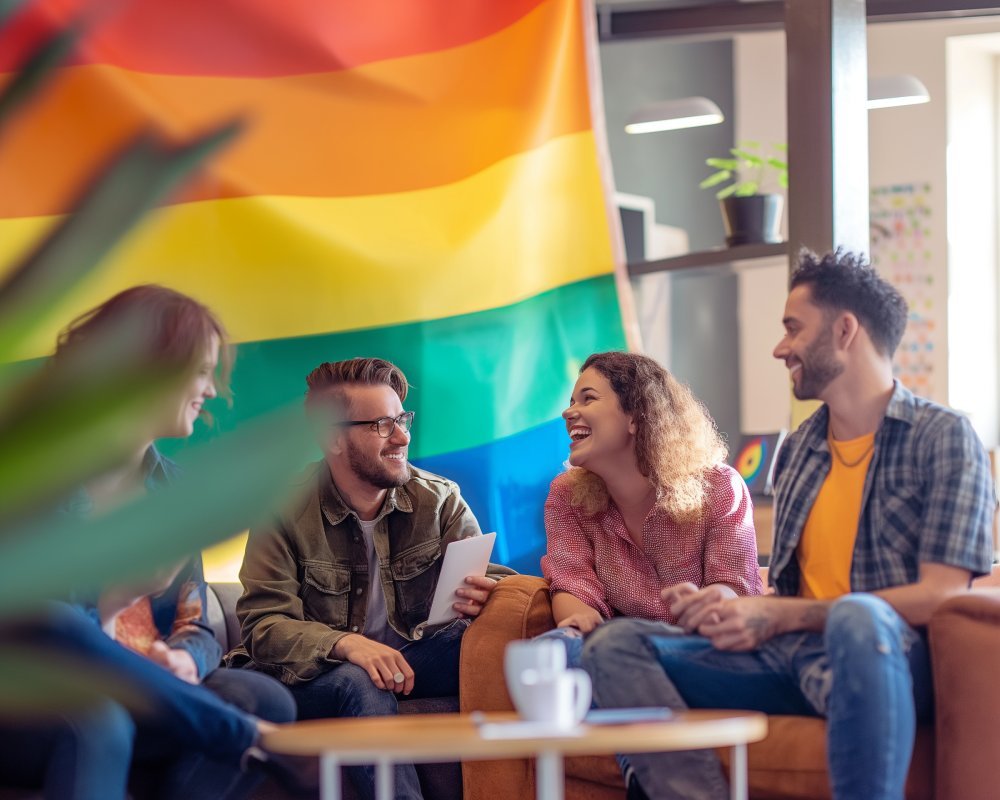
13.3 Mental Health Strain
Constantly representing an entire community can be emotionally taxing. Role models might feel pressured to appear flawless, fearing any misstep will reflect poorly on LGBTQ+ people. This burden intensifies depression, anxiety, or imposter syndrome. The dual pressure of public life and community expectations can lead to exhaustion, requiring robust self-care and support networks.
13.4 Safety Concerns
- Threats and Violence: High-profile figures might receive threats from extremist groups or individuals. Public events can pose security risks, particularly for trans women of color.
- Family and Community Rejection: Even if revered in broader circles, some role models may face hostility from their immediate families or neighborhoods, especially in strongly conservative areas.
13.5 Balancing Activism with Personal Life
Not everyone wants to be an activist. Some simply wish to live openly, yet find themselves thrust into an advocacy role. Balancing private needs—relationships, mental wellness, or creative projects—with public responsibilities can prove difficult.
Despite these hardships, many LGBTQ+ role models persist, motivated by the knowledge that their visibility saves lives and reshapes social norms. Their perseverance exemplifies resilience—a hallmark of the broader queer experience—and underscores the importance of communal support for those who shoulder the weight of representation.

14. Building the Future: How to Foster More LGBTQ+ Role Models
Recognizing the importance of LGBTQ+ role models begs the question: How do we cultivate more of them? While role models emerge organically, communities and institutions can create conditions that empower individuals to become visible leaders.
14.1 Educational Reforms
- Inclusive Curriculum: Schools can integrate LGBTQ+ histories and achievements into lessons, making it clear that queer people have contributed to science, arts, politics, and beyond. Students then see representation as normal from an early age.
- Supportive Faculty: Hiring openly LGBTQ+ teachers or training staff in LGBTQ+ awareness fosters a school culture where youths can see mentors in the classroom.
14.2 Workplace Diversity and Inclusion
- Non-Discrimination Policies: Ensuring robust legal protections against discrimination encourages employees to be out, potentially stepping into role model positions.
- Mentorship Programs: Companies can develop mentorship initiatives pairing LGBTQ+ professionals with junior staff, facilitating knowledge transfer, networking, and confidence-building.
- Visibility in Leadership: Employers should celebrate out executives or managers, showing that career advancement aligns with authenticity.
14.3 Community Groups and Nonprofits
- Queer Youth Organizations: Local youth centers or national nonprofits like The Trevor Project and GLSEN create structured environments where young LGBTQ+ folks can interact with mentors, attend leadership workshops, and build confidence.
- Scholarships and Awards: Funding for emerging leaders—through scholarships, grants, or recognition awards—can boost the profile of potential role models who might not otherwise afford advanced education or public platforms.
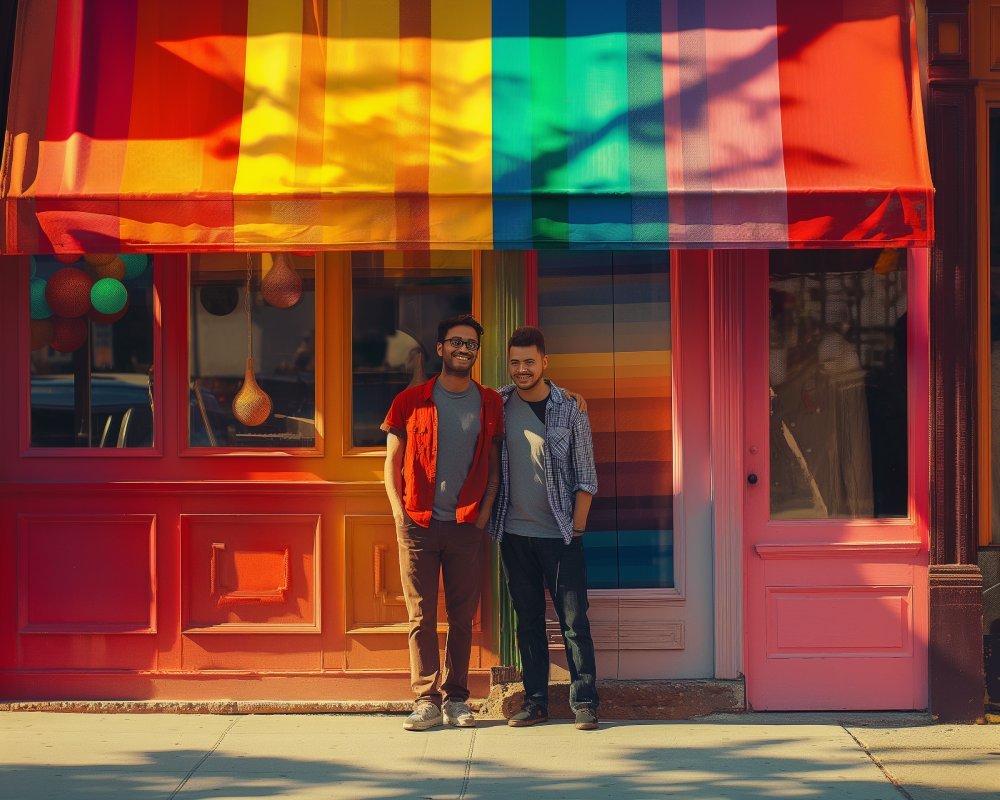
14.4 Media and Cultural Production
- Diverse Storytelling: Filmmakers, authors, and producers can highlight queer narratives, ensuring storylines move beyond “coming out trauma” to depict thriving, multi-dimensional LGBTQ+ characters. This fosters a new generation of cultural icons.
- Talent Incubation: Reality shows, competitions, or short film festivals focusing on LGBTQ+ creators can bring new voices to the forefront, propelling them into broader public consciousness.
14.5 Grassroots Advocacy
- Local Pride Councils: In smaller towns, forming Pride committees that support local business owners, artists, or politicians can gradually shape an environment where more individuals dare to live openly.
- Peer-Led Initiatives: Digital spaces like Discord servers, Reddit communities, or campus clubs can spark mutual encouragement, with members uplifting each other’s accomplishments.
- Ally Engagement: Non-LGBTQ+ allies can help open doors—offering resources, connections, or social capital so that queer talents flourish.
Through these strategies, the community collectively nurtures an ecosystem that normalizes LGBTQ+ success and authenticity. Rather than waiting passively for “the next big star” to come out, we can actively create networks that champion rising voices. The outcome is a robust pipeline of new role models—each forging a path that encourages more people to realize their potential.
15. Media Representation: The Evolution of Queer Visibility in Popular Culture
Media plays an enormous role in shaping public perception, so coverage of LGBTQ+ role models is crucial. Historically, queer characters were relegated to tragic or villainous roles, but in recent decades, representation in film, television, literature, and digital platforms has grown more diverse. This evolution underpins the concept of role modeling on a broad scale.
15.1 Early Depictions: Stereotypes and Censorship
- Hollywood’s Hays Code (1930–1968): Enforced moral guidelines that curtailed explicit references to homosexuality. Queer-coded villains or comedic caricatures were often the only “representation.”
- Underground Publications: Some niche or avant-garde film and literature circles tackled LGBTQ+ themes more openly, but mainstream acceptance lagged.
15.2 The 1970s–1990s: Gradual Openings
- Independent Cinema: Directors like John Waters or Pedro Almodóvar introduced queer aesthetics into cult classics, forging subcultural icons.
- TV and Talk Shows: Occasional documentary segments or interviews shed light on queer life, but sensationalism often accompanied these appearances.
- AIDS Crisis: Dramas and films about HIV/AIDS (e.g., “Philadelphia” in 1993) brought gay characters into the mainstream, albeit framed through tragedy.
15.3 The 2000s–Present: Multi-Dimensional Roles
- Mainstream Shows: Series like “Will & Grace,” “Queer as Folk,” and “The L Word” paved the way for normalized gay and lesbian characters. Later hits like “Pose” or “RuPaul’s Drag Race” broadened trans and drag representation.
- Global Streaming: Platforms like Netflix or Amazon Prime produce diverse content. Audiences worldwide can consume series featuring LGBTQ+ protagonists—from teen dramas to sci-fi.
- Social Media Crossovers: Reality personalities (like from “Drag Race”) become social media stars, bridging traditional TV with digital influencer roles.
15.4 The Impact on Role Modeling
- Increased Choice: Young people can find characters that resonate with them, whether that’s a trans superhero in a comic or a lesbian protagonist in a teen romance.
- Redefining Norms: Inclusive media helps the broader public see LGBTQ+ relationships and narratives as everyday parts of life, lessening stigma.
- Platform for Activism: Actors who play queer roles often become advocates, leveraging interviews and events to discuss issues like marriage equality, conversion therapy bans, or inclusive casting practices.
Still, gaps remain—queer women of color, disabled LGBTQ+ folks, or older queer adults are underrepresented. Yet the trajectory is promising, as each success story fosters an appetite for more authentic portrayals. Ultimately, media representation and role modeling are symbiotic: the more queer role models appear in entertainment, the more future projects highlight nuanced stories, and the cycle continues to build acceptance and admiration.
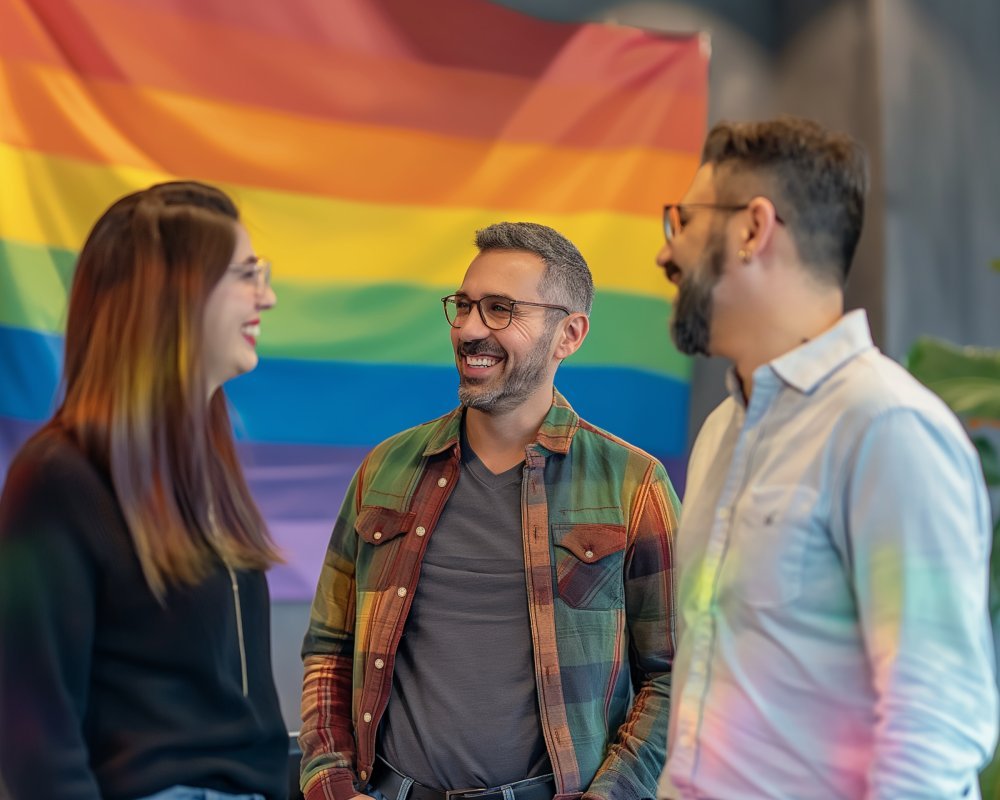
16. Educational Institutions and the Need for LGBTQ+ Representation
“Educational Institutions and the Need for LGBTQ+ Representation” is a critical conversation that directly influences how young people find role models. For many, school is the prime environment where they form social identities. If LGBTQ+ identities remain invisible or stigmatized in curricula and faculty, a gap emerges that can hamper students’ self-confidence and growth.
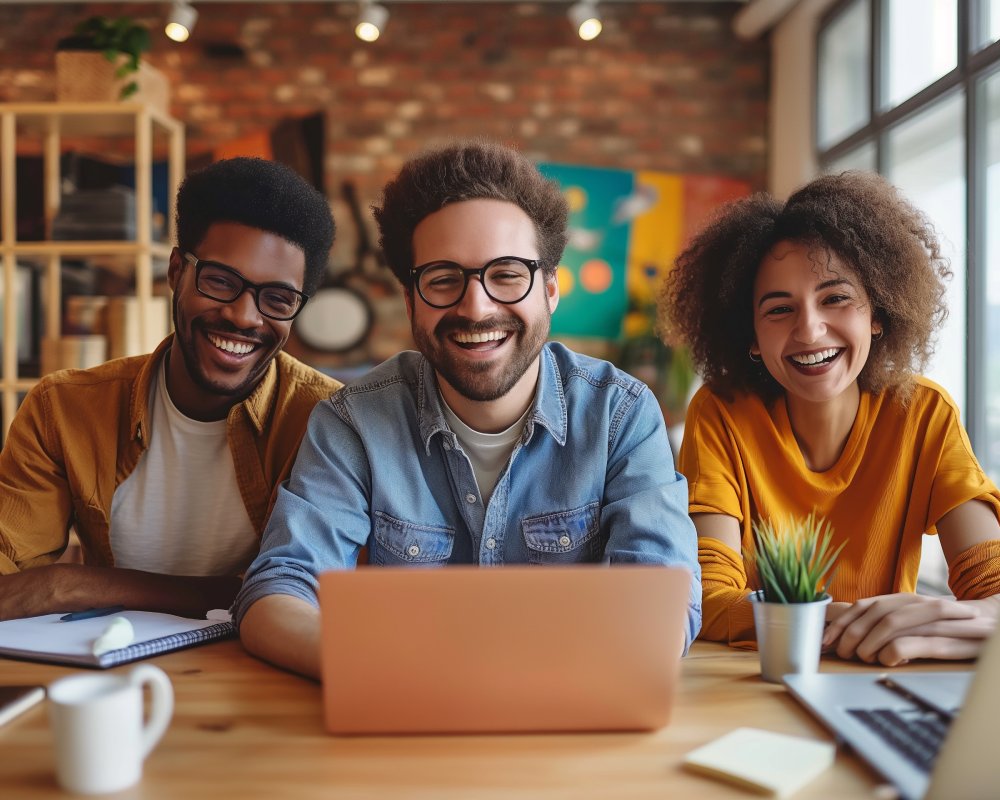
16.1 Curricular Inclusion
- Literature and History: Adding queer authors, historical events (like the Stonewall Riots), and notable LGBTQ+ figures (e.g., Bayard Rustin in the civil rights movement) into textbooks legitimizes queer contributions across subjects.
- Sexual Health Education: Comprehensive, inclusive health education addresses the needs of all sexual orientations and gender identities, reaffirming the normalcy of diverse experiences.
16.2 Faculty and Staff Visibility
- Openly LGBTQ+ Teachers: When teachers are safely able to be out, it broadens the concept of possible role models on campus. Students see real examples of LGBTQ+ professionals thriving in a caregiving, knowledge-sharing role.
- Resource Staff: Guidance counselors or diversity officers who specialize in LGBTQ+ issues can ensure that struggling students have safe, confidential support.
16.3 Extracurricular Programs
- GSAs (Gender-Sexuality Alliances): Student-run clubs provide peer support, resource sharing, and activism. Advisors or older students can become immediate role models for younger members.
- Guest Speakers and Workshops: Inviting LGBTQ+ professionals or activists to speak at assemblies enriches awareness and might inspire new forms of involvement.
16.4 Policy-Level Measures
- Anti-Bullying Policies: Clear school policies protecting LGBTQ+ students from harassment encourage them to be open about their identity. If bullies face consequences, the environment becomes more conducive to role modeling.
- Professional Development: Training staff on LGBTQ+ cultural competence ensures teachers don’t perpetuate biases, inadvertently or otherwise.
When schools integrate LGBTQ+ representation, students flourish. They’re more likely to see themselves reflected in curricula, staff, and activities—reducing alienation. Over time, such inclusive educational cultures produce new waves of LGBTQ+ youth who feel empowered to serve as role models in their peer groups and beyond.
17. Community Mentorship: From Local Advocacy to Global Impact
Mentorship is a powerful mechanism for creating LGBTQ+ role models at every level, from local neighborhoods to worldwide networks. While public figures often grab headlines, one-on-one or small-group mentorship can yield profound, lasting effects on individual lives.
17.1 Types of Mentorship
- Formal Programs: Nonprofits or community centers may pair LGBTQ+ mentors with younger participants seeking guidance. Examples include Big Brothers Big Sisters’ LGBTQ+ initiatives or sector-specific programs in tech, sports, and the arts.
- Peer Mentoring: University clubs or social networks often adopt buddy systems where upperclassmen guide newcomers, demystifying campus life and offering emotional support.
- Professional Mentorship: Corporations with LGBTQ+ resource groups facilitate mentorship between junior and senior staff, helping them navigate professional challenges while being out at work.
17.2 Benefits for Mentees
- Camaraderie and Belonging: A consistent mentor relationship reduces isolation and fosters belonging.
- Skill Building: Mentees learn everything from coping strategies for microaggressions to career development.
- Inspiration to Succeed: Seeing someone who has thrived in similar circumstances can spark ambition and dispel self-doubt.
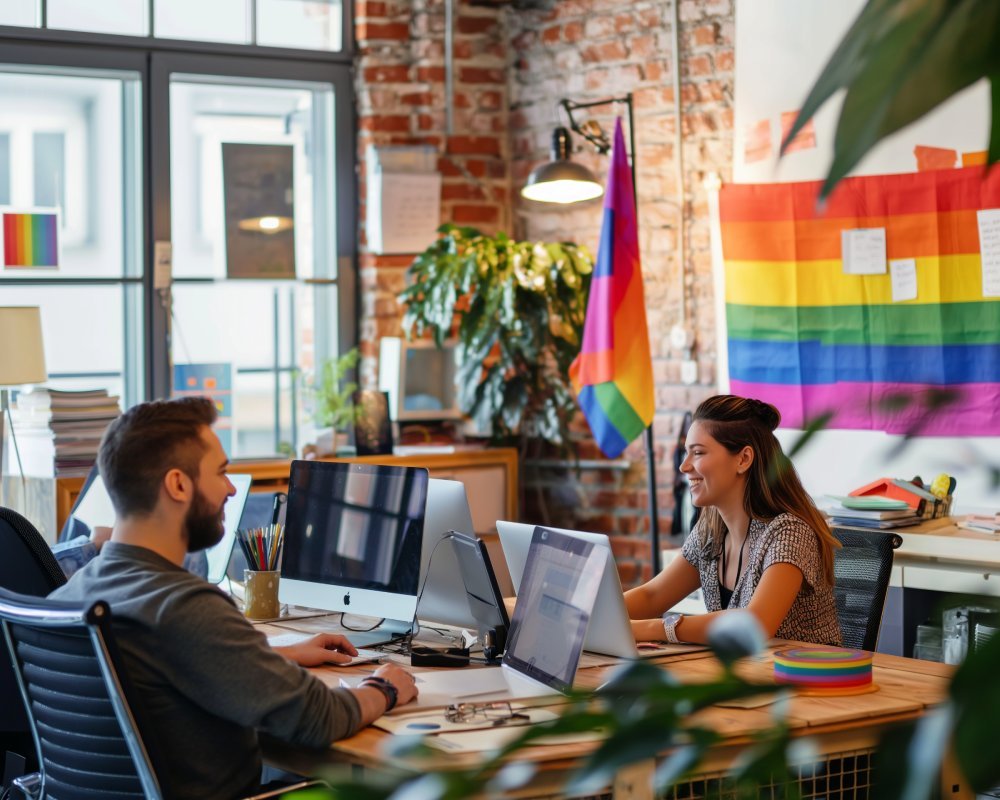
17.3 Benefits for Mentors
- Personal Growth: Teaching or guiding another clarifies the mentor’s own skills and knowledge, building confidence and empathy.
- Community Leadership: Mentors often emerge as recognized community figures, bridging age gaps.
- Continuous Learning: Younger mentees bring fresh perspectives, fostering intergenerational dialogue that enriches both parties.
17.4 Scaling Up: Local to Global
- Local Advocates: Start small with a city-based or campus-based mentorship scheme. Over time, these local initiatives can produce success stories that ripple outward, fueling broader activism or policy changes.
- Digital Platforms: Global online mentorship networks connect individuals across continents, particularly crucial in countries lacking local resources. Chat-based or video-based sessions break geographical barriers.
- International Alliances: Larger nonprofits collaborate across borders, offering scholarships, leadership training, or internships abroad, thereby forging a truly global network of LGBTQ+ role models.
By nurturing mentorship ecosystems, communities effectively cultivate a new generation of role models. Each mentor-mentee pair fosters bonds that transcend immediate contexts, weaving together a resilient tapestry of LGBTQ+ solidarity that resonates locally and globally.
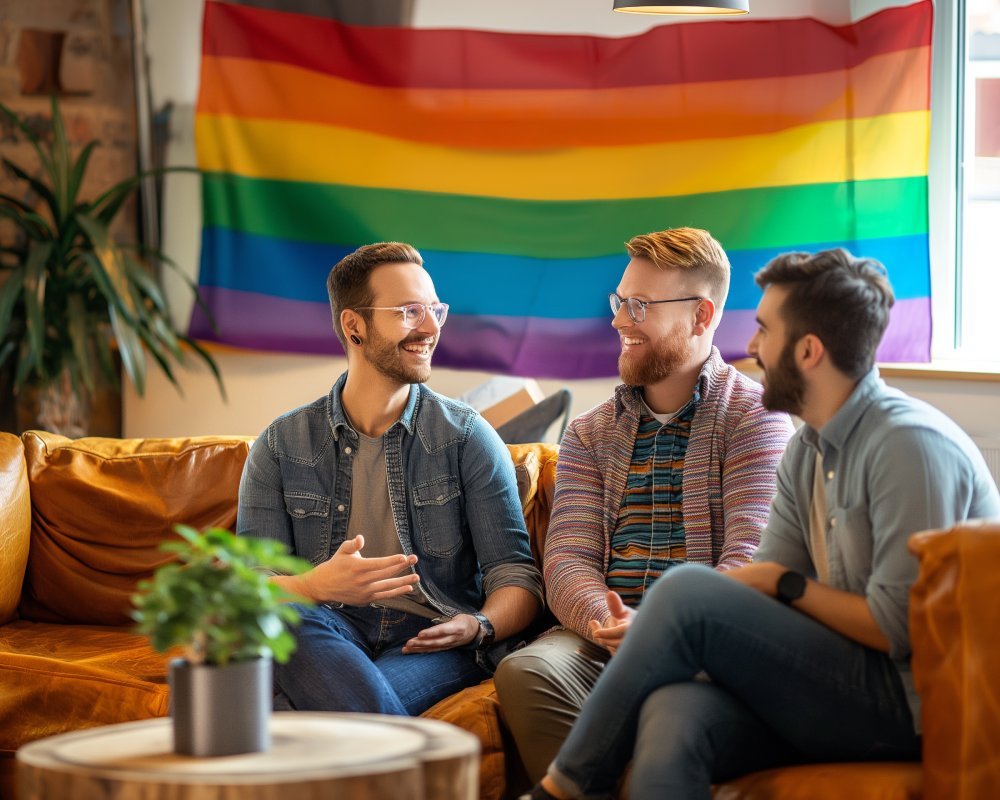
18. Allyship and the Role of Non-LGBTQ+ Supporters
While LGBTQ+ role models are indispensable, allyship—the active participation of non-LGBTQ+ individuals—can amplify their effectiveness. Allies who champion inclusion, challenge discrimination, and create supportive environments pave the way for more people to flourish as visible queer leaders.
18.1 Understanding Allyship
Allies are those who may not be LGBTQ+ themselves but commit to learning about queer issues, correcting biases, and advocating for equity. They perform a dual role:
- Support: They validate LGBTQ+ individuals’ experiences, offer emotional backing, and sometimes protect them from hostility.
- Advocacy: Allies use their social capital—be it in workplaces, educational institutions, or legislative spaces—to push for policy changes, funding, or cultural shifts that benefit the LGBTQ+ community.
18.2 Concrete Actions of Allies
- Standing Up Against Bullying: Calling out anti-queer slurs or jokes fosters a safer environment for emerging role models.
- Inclusivity in Policy: Allies in leadership can champion inclusive hiring, anti-discrimination policies, and gender-neutral restrooms.
- Signal of Safety: Displaying Pride flags, wearing pronoun pins, or stating support in public spaces can reassure queer individuals they’re accepted.
18.3 Why Allies’ Roles Are Crucial for Role Modeling
When workplaces, schools, and social circles are hostile or indifferent, it’s far harder for queer people to come out and stand as role models. Allies can:
- Offer Resources: Introduce mentors, sponsor training programs, or fund queer projects.
- Normalize LGBTQ+ Presence: By openly supporting LGBTQ+ colleagues or friends, they reduce the social stigma that might deter someone from being a public figure.
- Magnify Visibility: Allies in media or politics can highlight queer role models, ensuring they receive recognition.
18.4 Allies’ Evolution
Allyship is a journey. Allies might start by quietly supporting a friend or relative, then progress to vocal advocacy. As the LGBTQ+ movement continues to evolve—addressing trans rights, non-binary identities, or intersectional justice—committed allies learn and adapt, refusing complacency.
Hence, while LGBTQ+ individuals themselves carry the banner of representation, allies stand beside them, clearing paths and expanding platforms. This synergy enhances both the depth and the reach of role modeling.
19. Critiques and Nuances: When Role Models Disappoint
Even revered figures can falter, unveiling a complex reality: role models aren’t flawless. While we look up to them for inspiration, certain pitfalls can emerge:

19.1 Scandals and Controversies
Some LGBTQ+ celebrities or leaders might be embroiled in legal troubles, allegations of misconduct, or harmful remarks about other marginalized groups. Their downfall can shock fans who once considered them moral beacons. Consider:
- Hypocrisy: Claiming to champion equality while perpetuating sexism, racism, or ableism can undermine trust.
- Addiction or Abuse: Public figures battling personal demons may inadvertently set negative examples if they deny accountability.
19.2 Evolution of Perspectives
Role models who once stood for progressive ideals might later adopt problematic stances or become complicit in harmful policies. This shift can alienate followers who feel betrayed.
19.3 Overidealization
When a community elevates someone to near-saintly status, it can blind them to human complexities. Overidealization often leads to disappointment if the figure eventually shows human error.
19.4 The Lesson of Imperfection
Though disillusioning, these moments highlight the need to:
- Distinguish the Person from the Impact: While a role model’s harmful actions are never excusable, the positive impact they had on some individuals might remain valid.
- Diversify Inspiration Sources: Relying too heavily on a single role model is risky. A wide array of representations ensures one person’s failings don’t derail an entire community’s sense of hope.
- Encourage Accountability: Communities can call out or in a role model who missteps, promoting growth rather than instant cancellation if change is genuinely pursued.
In other words, acknowledging that role models are human isn’t about lowering standards; it’s about sustaining a realistic, multifaceted approach to leadership and admiration. It affirms that even well-intentioned figures need accountability mechanisms.
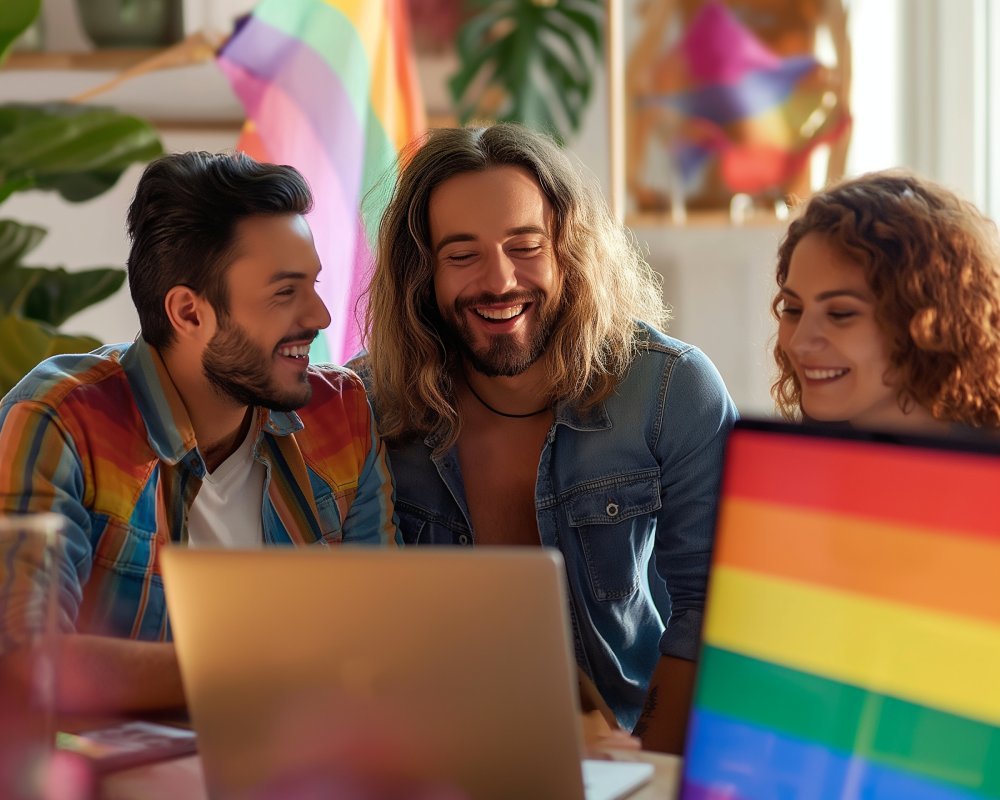
20. Conclusion and Ongoing Reflections
We set out to answer “What Is Gay Role Models?” but ventured far beyond a single definition, exploring the broad ecosystem of LGBTQ+ role models—including lesbian, bisexual, and transgender individuals—along with crucial layers of intersectionality, mentorship, allyship, and historical context. Here are key takeaways:
- Role Models Are Catalysts: LGBTQ+ figures who live openly inspire hope, break stereotypes, and mentor emerging generations. They offer tangible proof that one can thrive despite prejudice.
- Diverse Representation Matters: Role modeling isn’t “one size fits all.” Lesbian role models, bisexual icons, transgender pioneers, and people of color or disabled LGBTQ+ leaders all fill distinct needs for representation.
- Ongoing Challenges: Although progress has been made, discrimination, media sensationalism, and public scrutiny continue to weigh heavily on out LGBTQ+ role models. This underscores the importance of communal support.
- Intersectionality Enriches Role Modeling: By acknowledging layered identities—race, disability, faith—we deepen the relatability and authenticity of role models for a broader audience.
- Community Engagement: Mentorship programs, inclusive institutions, and allies’ backing can foster new role models, ensuring that representation expands and remains sustainable.
- Imperfect Humanity: Recognizing that role models can err or hold complex traits prevents disillusionment and encourages a more mature, forgiving form of admiration.
Ongoing Reflections
- Building Sustainable Change: How can we ensure our communities systematically produce new LGBTQ+ role models rather than relying on sporadic, luck-based emergence? The solutions likely involve policy, education, media, and grassroots activism working in harmony.
- Bridging Global Gaps: In countries where LGBTQ+ rights lag significantly or homosexuality is outlawed, role models risk severe persecution. How can international solidarity support them without imposing neo-colonial frameworks?
- Digital Evolution: With social media and virtual platforms continuing to expand, will we see more “micro-influencer” role models shaping localized or niche communities?
- Intersectional Advocacy: As climate justice, racial justice, and queer rights intersect, do we see more role models stepping into cross-cutting activism? Possibly, yes, bridging once-distinct movements for broader social impact.
In concluding, it’s clear that LGBTQ+ role models matter deeply. They stand not only as individual success stories but also as harbingers of a more inclusive society. Whether you’re reflecting on your personal heroes, seeking to become a role model yourself, or simply supporting a friend or loved one on their journey, remember that every form of visibility and affirmation helps. When more voices rise, more hearts are heard, and more individuals realize they are not alone.
Advertisement · Scroll to continue

More Recommended
What is sensitization in gender?
What is sensitization in gender? – Understanding what is sensitization in gender is crucial for [...]
The Best Gay-Friendly Cities to Live In
The Best Gay-Friendly Cities to Live In – When it comes to finding the perfect [...]
How to Support the LGBTQ+ Community on Your Google My Business Profile
How to Support the LGBTQ+ Community on Your Google My Business Profile – Google My [...]
Pride Event Cancelled Over Religious Threats in Amritsar, Punjab, India
Pride Event Cancelled Over Religious Threats in Amritsar, Punjab, India – The recent cancellation of [...]
How companies are using targeted ads to reach and engage with LGBTQ+ consumers
How companies are using targeted ads to reach and engage with LGBTQ+ consumers – How [...]
How to Market and Advertise My Services to the LGBT Community?
How to Market and Advertise My Services to the LGBT Community? In today’s diverse marketplace, [...]
Exploring Transgender People: Insights into Gender Identity and Expression
Exploring Transgender People: Insights into Gender Identity and Expression In recent years, the visibility of [...]
10 LGBT-Friendly Small Towns in North Carolina for LGBT Families
Discovering LGBT-Friendly Small Towns in North Carolina: Hidden Gems for Inclusive Living North Carolina, with [...]
What Is A Chapstick Lesbian
What is a Chapstick Lesbian? A Comprehensive Guide to Understanding the Term When exploring the [...]